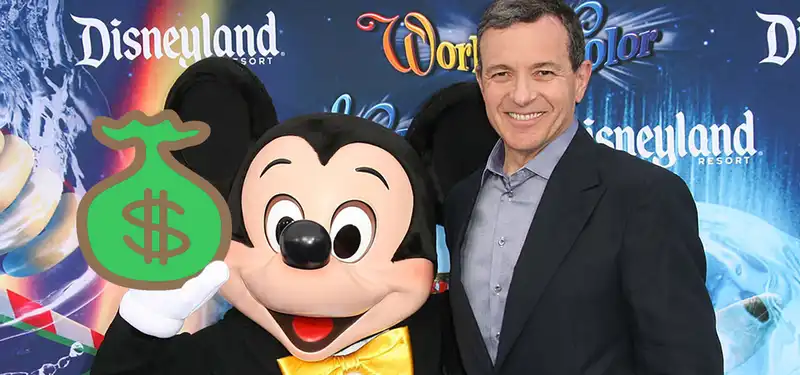Feb 9, 2023
Disney Fires 7,000 Employees. New video essay explaining what CEO Bob Iger is doing.
The Walt Disney Company released its quarterly earnings report yesterday, and with it came the unpleasant news that the company is reducing growth in content spending and laying off about 7,000 people worldwide.
Given the importance of these layoffs and the recent return of Bob Iger as Disney's CEO, we invited Colin Tedders of the Investor Channel to explain Disney's latest quarterly earnings report (for reference, download the PDF here (for reference, you can download the PDF here).
Watch the video below:
Colin's detailed analysis of Disney's latest quarter shows where the skeletons are buried, for example, the stagnant growth of Disney's streaming business, but also provides a useful look at how companies, whether Disney or other public companies, can use quarterly provides useful financial advice on how to make sense of the numbers in the report.
A major reason we asked Colin to produce this video is our belief that understanding a company's financial situation is valuable knowledge for workers in animation. Over the past year, workers in the animation industry have endured numerous layoffs, project cancellations, and studio mergers and consolidations. Having the ability to view a company from the unsentimental perspective of an investor is a useful skill and can help animation workers make realistic and well-informed decisions about their personal career paths.
Quarterly earnings reports are reports that publicly traded companies file every three months regarding their most recent financial performance. Quarterly earnings reports contain information about a company's net income, earnings per share, income from continuing operations, and sales. Securities analysts and investors use quarterly earnings reports as one way to gauge a company's financial health and future prospects.
After earnings reports are released, company executives often participate in investor conference calls to reveal more information than is contained in the earnings reports. For example, on yesterday's Disney conference call, CEO Bob Iger announced 7,000 job cuts. He also explained that Disney's business would be split into three major segments: Disney Entertainment, ESPN, and Disney Parks, Experiences, and Products. We will have to wait until next quarter to see what that actually looks like.
Tedards admits that this type of document is "kind of daunting for anyone new to investing." Therefore, we will focus only on the sections that Tedards suggests are the most important.
Revenue is all the money that comes into the company from all sources. For the purposes of this report, Disney is combining its media and entertainment divisions (linear, streaming, and ESPN) into one. That will no longer be the case next quarter when Iger's plan to split the company in thirds is put into action. Disney's most recent quarter's revenue was down in traditional linear TV, but up in direct-to-consumer (the company's streaming platforms such as Hulu and Disney+). However, the increase in revenue does not tell the whole story, and things look grim if we pay close attention to the following key sections...
Fanciful Terms for Profits. According to Disney's latest report, Disney Media and Entertainment lost $10 million for the quarter. That's not great, but it's in the direct-to-consumer business where things really start to look bad: from $5.3 billion in streaming revenue, Disney lost $1 billion in just three months due to costs like advertising, content costs, and streaming technology infrastructure.
That's a fancy way of saying income statement; according to Tedards, this is probably the most important part of the entire report, buried 14 pages down. If we learn anything from this video, it is to learn how to read an income statement. The terms top line and bottom line come from this type of report, where the top line is revenue and the bottom line is net income, or the money the company had on hand at the end of the quarter. The bottom line is usually underlined twice, making it easy to find in most reports. There are several lines dedicated to sources of income and costs of expenses, but the one that Tedders recommends paying attention to is "operating income," which in Disney's report is labeled "income from continuing operations before income taxes." This shows the money a company makes from operating its business. The better this number is, the healthier the company appears to investors.
"If you can understand a cash flow statement, you are in the top 1% of financial literacy," says Tedders. The good news here is that the average investor only needs to understand two lines on the cash flow statement. That is "net income from continuing operations" - the bottom line of a company's financial report - and "cash used in continuing operations" - money spent throughout the report from the company's cash on hand. Again, the higher the positive number, the more desirable it is.
.



Post your comment